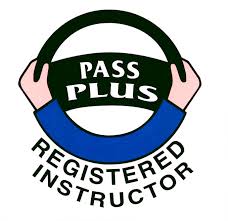PASS PLUS

Great!
You've passed your driving test
now you can drive on your own at last. But it doesn't stop there; this is just the beginning.... Getting your own car will give you the independence you need. Statistics show that new drivers are more likely to have an accident in the first two years of passing their test than at any other time in their driving career. For a new driver, the cost of insurance can be sky high. The reason for this is not down to age it is basically down to the lack of driving experience. This is where PASS PLUS comes in - Saving you money on your first years insurance
Driving around a town
The first module has two parts. It begins with an introduction to Pass Plus, explaining the course aims and the skills and knowledge to be covered.The second part is a practical session covering the different features of driving in a town, such as complex junctions and public transport.
You'll focus on:
- observation, judgement and awareness
- eye contact
- consideration for vulnerable road users
- showing caution
- keeping space around your car
All weather driving
This module will be covered as much as possible in a practical session. You'll focus on correct speed, safe stopping distances, plus seeing and being seen in:
- rain
- sleet, snow and ice
- mist and fog
- bright sunshine
You'll also look at skidding, and:
- what causes skids
- how to prevent skids
- correcting slow-speed skids
- braking on poor surfaces
- aquaplaning
Driving in the countryside
This module looks at the main differences between town and country driving:observing the road ahead
- making progress safely
- bends, hills, uneven roads and dead ground
- keeping a safe distance from the vehicle ahead
- safe overtaking
It focuses especially on being aware and showing consideration for:
- pedestrians, horse riders and animals in the road
- farm entrances
- slow moving vehicles
It also covers the correct use of a horn, coping with mud and debris on the road and how to use passing places.
Driving at night
This covers the important parts of driving at night, dawn and dusk. You'll learn about:the importance of using headlights correctly
- adjusting to the dark
- judging speed and distance
- the correct use of lights and keeping them clean
- dealing with dazzle
- hard-to-see road users
- parking issues
Driving on dual carriageways
Dual carriageways are high speed roads where the two carriageways are separated by a central reservation. You'll need to have particular skills, including:
- effective observation, using your mirrors and checking blind spots
- judgement and planning ahead
- separation distances
- joining and leaving a dual carriageway
- overtaking and lane discipline
- the correct use of speed
Driving on motorways
This should be a practical session if possible. If there is no motorway nearby, it will be covered in a theory session.You should drive on a motorway as soon as you can afterwards so you can put the theory into practice.
The topics covered include:
- journey planning
- joining and leaving a motorway, and using slip roads
- safe speeds in different circumstances
- effective observation
- signs, signals and markings
- overtaking and lane discipline
- courtesy to other road users
- motorway fatigue
- breakdown procedures
- use of lights, including hazard warning lights
- debris on the carriageway
- crosswinds